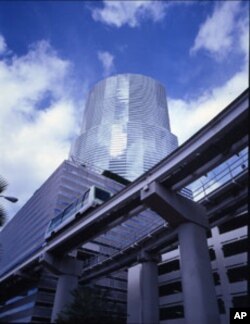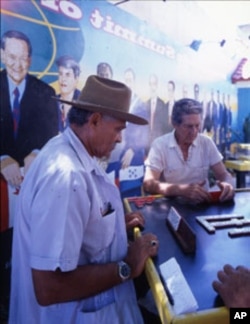The city of Miami, Florida, is an oasis of swaying palm trees, white beaches, yachts and gigantic tour ships in the harbor, a handy monorail transit system that winds all through downtown, and boutiques and clubs in a trendy shopping plaza called Coconut Grove.
And several times a year, a generally quiet part of town with no big buildings or yachts comes alive with a flourish.
It's an old, crowded neighborhood of modest stucco homes and tiny shops that stretches for about 30 blocks along Eighth Street.
Only the people here call it Calle Ocho, and even the signs at the McDonald's fast-food restaurant are in Spanish.
This is Miami's Little Havana, where Cuban immigrants and their children have lived, worked, and shopped since the early 1960s. Communist leader Fidel Castro's overthrow of the Cuban government in 1959 triggered a huge exodus of Cubans to the west Miami neighborhood.
And Little Havana's population swelled again during six months in 1980, when more than 100,000 Cubans were permitted to leave Castro's island en masse in what came to be called the Mariel Boatlift.
To this day in Little Havana, the food, including black beans and rice and frita cubanas — hamburgers of a sort, topped with grated fried potatoes — is Cuban. Street murals depict Latin leaders.
The games of dominoes that old men play in Maximo Gomez Park are straight out of Havana.
The music is exuberantly Cuban at street festivals along Calle Ocho. And many of the cigars that the men smoke are hand-rolled right in Little Havana by craftsmen who brought their trade with them from the Cuban capital.
But all around this pocket of Cuban culture, things are changing. Ten years ago, almost all of Miami's top 10 radio stations broadcast in Spanish. Now, just two do.
That's because — while Spanish is still the language in many homes — the children of immigrants from Cuba and other Latin nations speak English in school and on the street, wear American clothes and prefer upbeat Anglo rock music to their parents' dreamy, old Spanish ballads.











